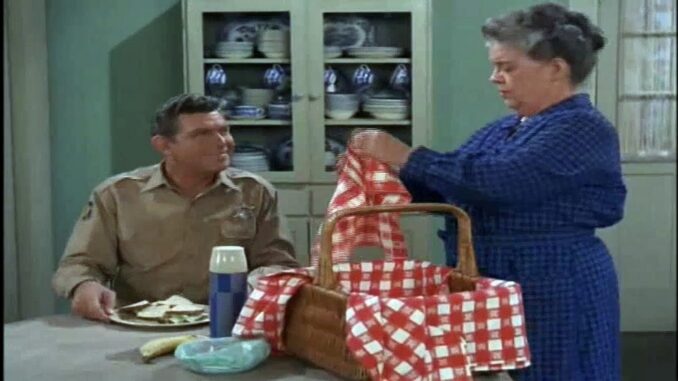

Most television comedies in the early 1960s used laugh tracks to get viewers to laugh along.
The Andy Griffith Show also used one, but it wasn’t an idea the star himself was on board with.
Griffith said Danny Thomas made him ‘very nervous’
Andy Griffith’s show was given a pilot episode on The Danny Thomas Show, starring singer, actor, and producer Danny Thomas. Clearly, Griffith’s performance was an impressive one because, before long, his own show was given the green light by CBS.
Griffith told The Andy Griffith Show book author Richard Kelly about the jitters he experienced working with Danny Thomas.
“I came out [to Los Angeles], did the pilot – and I remember a lot of that, too, because Danny Thomas made me very nervous,” Griffith recalled. “So when we started the show a lot of people were talking and wondering why they had me out here. Because I was wooden, very wooden. And as the show progressed I got looser and looser and when they brought the audience in, I was on top of it. And the show, in fact, did sell.”

Griffith wasn’t on board with having a laugh track
Before joining the Griffith Show cast, Don Knotts had been part of The Steve Allen Show. That show’s cancellation led to Knotts contacting Griffith after seeing the pilot to see if he needed a Deputy on his new show.
Knotts strongly felt, and told Griffith as much, that when Steve Allen’s show added a laugh track, it was the death knell for the program.
“Filming a one-camera comedy in 1960 meant sweetening it with a laugh track,” Daniel de Vise, author of Andy and Don: The Making of a Friendship and a Classic American TV Show, wrote. “Andy was uneasy with the laugh track. His concern may have come from Don, who believed the laugh track had killed The Steve Allen Show.”
Griffith was pressured to use a laugh track on the 1960 comedy. He resisted and instead asked the show’s producers if, instead, they could show an episode to a live audience and record that laughter. It didn’t last long.
Griffith also rejected the 3-camera format of many other shows
In addition to having strong opinions on laugh tracks, Griffith also was not fond of the three-camera taping experience that he testified with Danny Thomas’ show.
“Most situation comedies of the day, including Danny Thomas, were filmed with three cameras before a live studio audience,” according to de Vise.
Griffith disliked having to “perform” for laughing in front of a room of people.
“I hate those three-camera shows,” the actor said. “You can work on values all week, and the minute you bring two hundred people in, all your values go out the window.”
Unfortunately, Griffith couldn’t have it both ways: without an audience, canned laughter had to be added.